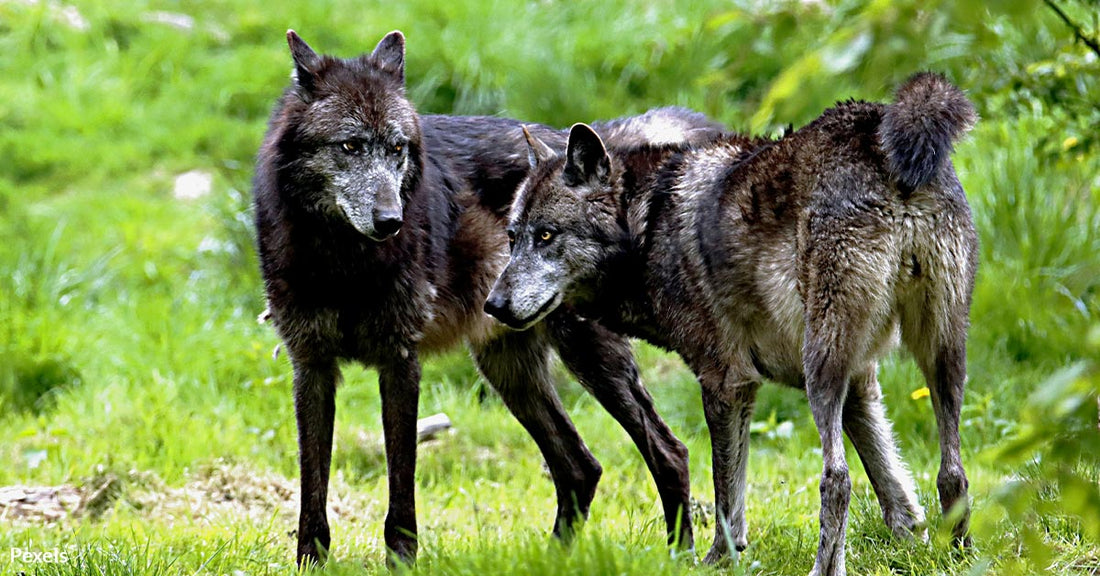7th Annual Holiday Toy & Book Event Help make the holidays brighter this year!
Poisonous Plots Against Oregon’s Wolves Endanger Families and Pets
Matthew Russell
Oregon’s wolf population faces a crisis that threatens not just the wolves themselves, but people and pets in the state. A troubling rise in wolf poaching—particularly through poisoning—has not only stagnated the wolves' recovery but also introduced new risks for those who enjoy outdoor recreation.
As poaching intensifies, it creates ripple effects across the ecosystem, affecting other wildlife and potentially endangering domestic animals and even humans.

Poisoning Wolves is a Dangerous Practice for Pets and People
The recent increase in wolf poisonings in Oregon is becoming a major concern for communities and conservationists alike. In the first half of 2024, wolf deaths spiked in the state, many of them caused by humans. One of the most alarming trends is the use of poison. According to a report from KTVZ, the Oregon Department of Fish and Wildlife (ODFW) issued a warning to recreationalists in May 2024, urging them to keep their dogs on leashes to avoid exposure to wolf poison traps. The poison, while aimed at wolves, can affect any scavenger, including pets.
Bethany Cotton, conservation director at Cascadia Wildlands, voiced her concerns about the risks of hiking and camping in eastern Oregon.
"I chose not to go camp or hike in that part of the state right now, knowing that this is happening,” she told KTVZ.
Cotton’s decision underscores the widespread impact that the illegal practice is having—not only on wildlife but on anyone spending time outdoors in wolf habitats.

Deadly Consequences for More Than Wolves
The indiscriminate nature of poisoning has extended its damage well beyond the intended targets. Earlier in 2024, a single poisoned cow carcass in the Hells Canyon National Recreation Area killed three wolves, two golden eagles, a mountain lion, and a coyote. This event led to the Oregon Department of Fish and Wildlife's May warning, according to KOIN.
Wildlife officials are increasingly concerned. The Oregon Wolf Conservation and Management report released in 2023 showed no population growth for wolves for the first time since their reintroduction. KOIN reports that 12 wolves were killed illegally that year, the highest number since tracking began. Even non-lethal methods meant to reduce livestock conflict seem less effective as human-wolf conflict escalates.

Poaching's Impact on Ecosystem Balance
The ongoing poaching crisis is not just about protecting an individual species; it’s about maintaining a balanced ecosystem. Healthy wolf populations help control diseases like chronic wasting disease in deer and elk, which benefits both the environment and humans. In rural Oregon, these predator-prey dynamics are essential for keeping wildlife populations in check, which can also reduce vehicular accidents caused by deer and other large animals on roads.
"They bring a lot of benefits to the landscape... we just need to really learn to coexist with them,” she told KTVZ. But this coexistence grows increasingly difficult when poachers interfere with natural processes. Data from Columbia Insight reveals that 19 wolves have been poisoned in Oregon since 2015, 18 of which were killed in just the last three years.
The Center for Biological Diversity’s Amaroq Weiss called this “an epidemic,” warning that poaching undermines efforts to sustain the population.

Calls for Action to Address Poaching
Oregon’s Department of Fish and Wildlife is collaborating with local law enforcement and wildlife organizations through programs like the Turn-In-Poachers initiative to catch poachers. This coalition has offered financial rewards for tips leading to arrests, but results have been elusive. Investigations into the killings, particularly those involving poison, remain ongoing.
Bernadette Graham-Hudson, administrator of the ODFW wildlife division, described the situation as “alarming,” pointing out that poaching not only impacts conservation efforts but also the state’s ability to manage wolves effectively. KOIN reports that the majority of poaching cases go unsolved, creating frustration for those advocating for wolf recovery.
The wolf population remains dangerously low, with the ODFW reporting only 178 wolves in 2023, a stagnant figure for the first time in 16 years. The Wolf Conservation Center warns that this stagnation threatens the long-term recovery of the species. Conservationists are pushing for stronger regulations and increased public awareness to prevent future deaths and protect Oregon’s wildlife.

The Path Forward
While legal wolf management actions do occur in response to livestock depredation, the spike in illegal killings through poison poses an entirely different set of challenges for officials. The Oregon Department of Fish and Wildlife and other agencies are working on strategies to manage human-wolf conflict, but the battle is far from over. Conservationists like Cotton are calling for more public involvement and vigilance.
The future of Oregon’s wolves, and by extension its wilderness, depends on whether poaching can be curbed. The damage is not isolated to wolves; it spills over into the lives of pets, people, and the broader ecosystem. For now, the fight to save Oregon’s wolves rages on.
Click below to fight poaching and save Oregon’s wolves!

